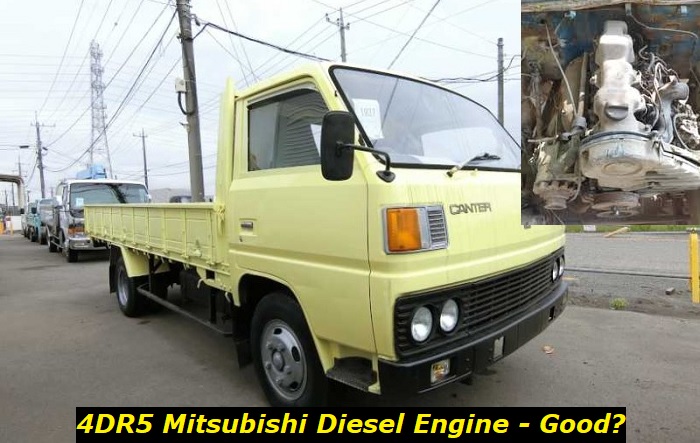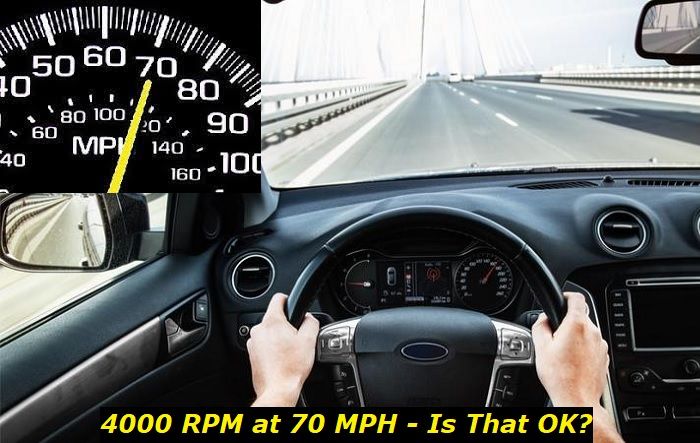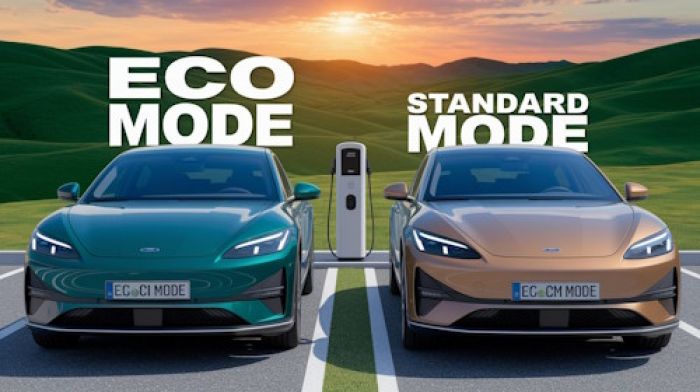There are so many engines out there that being able to differentiate them can become quite difficult. This isn't something necessarily bad, since having so many engine options means that no matter what you want from an engine, you will almost certainly find a few of them that will do the job properly.
Since we've mentioned differentiating engines, you should know that all engines have a certain code, which the manufacturer uses to tell apart the many possible different variants of the same base engine, such as 4DR5.

Key features and my opinion about the engine
- Production years:1975-1998
- Average lifespan of 4DR5:400,000-500,000 miles
- Fuel supply type:indirect injection / direct injection
- Power range:80-100 hp
- Fuel efficiency:average
- Engine block material:cast-iron
- Engine reliability score:high
- The most common problems:injection system issues, cooling problems, excessive vibrations, ignition issues.
Who makes the 4DR5 engine?
Before going a little bit more in-depth about this engine, let's first talk about who makes it. The 4DR5 engine is produced by Mitsubishi Motors. This is a company whose vehicles and engines have been very popular for quite a long time, regardless of the country or continent on which they've been sold.
If you find the engine code a bit confusing, we're now going to explain to you what exactly these numbers and letters mean. You should know that Mitsubishi has used this system for many of its engines, which is why this information also applies to other Mitsubishi engines.
The first character, the number 4 in this case, signifies the number of cylinders that the engine has. The second one, which is D, used to signify whether the engine was powered by gasoline or diesel, until the 1980s when their system changed. The third character, R in our case, was used to denote the engine family that particular engine belonged to.
The last character, 5 in this situation, signifies the specific model of the engine from a certain family. On certain engines, characters like T have been used to signify that they are equipped with a turbocharger.
Now that you understand how Mitsubishi's naming system works, you can probably tell from this that the 4DR5 engine is a four-cylinder diesel-powered engine.
4DR5 engine specifications
One of the most important aspects when talking about an engine is what it can do. What we mean by this is that you should always do thorough research about an engine's specifications to find out whether it's suitable for what you want to do with it, or whether it would be the best engine for a certain model of car.
As we've mentioned earlier, the 4DR5 engine is an inline engine with 4 cylinders and it runs on diesel fuel. It is a SOHC (single overhead camshaft) engine, with two valves per cylinder and 8 in total and it is water-cooled.
Regarding the power output, the 4DR5 engine is quite modest in this department, since it develops around 80 HP @3800 RPM, thanks to its displacement of 2659cc (162 cui). The bore and stroke of this engine are 92mm x 100mm and its compression ratio is 20.0:1. The torque figure is around 177 Nm (131 ft/lbs) @2200 RPM.
This particular variant is naturally aspirated, which means that it doesn't feature any form of turbocharging or supercharging. There are, however, variants that do feature a turbocharger, but we'll talk about them a little bit later.
4DR5 engine applications
This engine has been used in multiple vehicles over the years, especially since it was first produced in the 1970s. Here are some examples of its applications:
1) Mitsubishi Jeep
This vehicle has been produced by Mitsubishi Motors under a license from Willys between 1953 and 1998. When the 4DR engine was introduced, it was used to equip this vehicle as well. If you're unfamiliar with the Mitsubishi Jeep, you should know that this is a vehicle that was designed mainly to go off-road, which is why there was a need for a very robust engine.
When equipped with the 4DR5 engine, the Mitsubishi Jeep can get an average fuel consumption of anywhere between 21 and 25 MPG and it can get to a top speed of around 62 MPH. We know that this doesn't sound particularly exciting, but you should keep in mind that this vehicle was designed for off-roading and not to go racing.
The Mitsubishi Jeep came equipped with 4WD (four-wheel drive) and a 4-speed manual gearbox. This vehicle weighs around 3200 lbs and it has a payload of around 1200 lbs.
Manufacturing was stopped in 1998 because the car didn't meet the stricter emissions and safety standards. However, they are still very appreciated because of their robustness and simple construction that allowed for engine swaps to be made quite easily.
2) Mitsubishi Fuso Canter
The 4DR engines have also been used in some Mitsubishi Fuso Canter models. They are light-duty commercial vehicles and when equipped with the 4DR5 engine, they produce around 80 HP.
Common faults with the 4DR5 engine
As you might have already realized, the 4DR5 engine is quite simple, so you wouldn't expect too many things to go wrong with it. If we're honest with you, you are right. There really isn't much that can go wrong with this engine, since it's so simple and so robust. After all, it should be like this, since it was designed to be used in vehicles such as the Mitsubishi Jeep.
However, no matter how strong a certain engine is, it will never be bulletproof, which is why we're going to tell you about a few things that can go wrong with this engine, or with any similar diesel engine in general.
Here are some of them:
1) Bad glow plugs
If you don't know what the glow plugs do, the simple explanation would be that they heat up the combustion chamber before starting the engine. They are used only on diesel-powered engines since they do not ignite their fuel by spark (using spark plugs), but by compression. If they were to fail, you will have a diesel engine that will struggle with starting, especially if the weather is a little bit colder.
2) No engine power
Diesel engines can be a little bit sensitive when it comes to things like fuel injection pumps or turbochargers and if there's any problem with one of these components, you will almost certainly notice that there simply isn't any power.
3) Black smoke
The black smoke that almost everyone seems to hate is the result of a fuel mixture that is too rich. This smoke can be caused, just like in the case of a lack of engine power, by faulty injection pumps or turbochargers.
4) Overheating
Diesel engines tend to be a little bit more sensitive when pushed to their limits, which could cause them to overheat. We would recommend you stay as far as possible from these limits, or, if you really have to drive the vehicle hard, allow it to cool down properly.
4DR5 engine prices
Since these engines are no longer made, you are reduced to looking for used ones, which makes telling an exact price a little bit more difficult. The price really does depend a lot on what the engine's state is or whether it's complete or not. Some of them also come included with clutches and gearboxes, which will make them more expensive.
However, prices for good 4DR5 engines revolve around the $1000 mark, but they can get higher, depending on the mileage, condition, and model.
Other variants of the 4DR engine
- 4DR6 - This particular version is equipped with a Mitsubishi TD04-01 turbocharger, features direct injection, has a compression ratio of 17.5:1, and produces around 94 HP and 216 Nm (159 ft/lbs).
- 4DR7 - This version has a capacity of 2835 cc (173 cui) and it produces around 88 HP.
Should you buy a vehicle equipped with this engine?
The answer to this question depends a lot on what you intend to do with such a vehicle. Since this engine has been used mostly in Mitsubishi Jeeps, we're going to refer to this particular car. If you are looking for a reliable and very simple vehicle that you are going to use mainly for off-roading and you also can buy parts for it easily, then we would certainly recommend you to buy one of these vehicles, especially for the right price.
Final thoughts
The 4DR5 engine is a simple and very reliable unit and it shouldn't be overlooked when looking to buy a Mitsubishi Jeep, even if many of them have been swapped for other more modern engines. After all, when going off-road, what you need is a very strong and simple engine that can be fixed with a basic set of tools, right?
About the authors
The CarAraC research team is composed of seasoned auto mechanics and automotive industry professionals, including individuals with advanced degrees and certifications in their field. Our team members boast prestigious credentials, reflecting their extensive knowledge and skills. These qualifications include: IMI: Institute of the Motor Industry, ASE-Certified Master Automobile Technicians; Coventry University, Graduate of MA in Automotive Journalism; Politecnico di Torino, Italy, MS Automotive Engineering; Ss. Cyril and Methodius University in Skopje, Mechanical University in Skopje; TOC Automotive College; DHA Suffa University, Department of Mechanical Engineering






Add comment